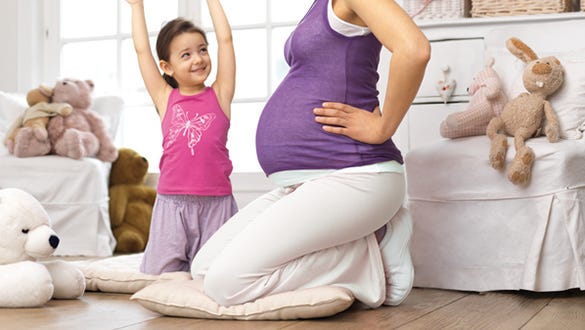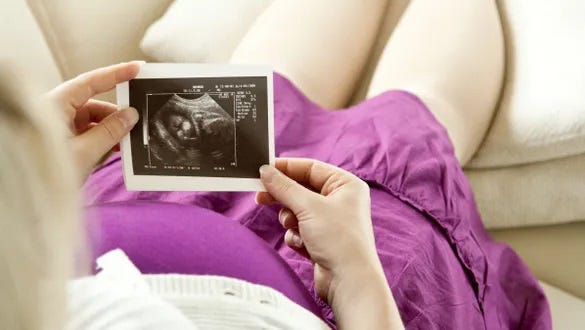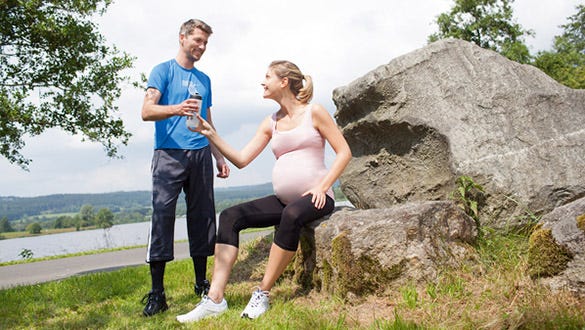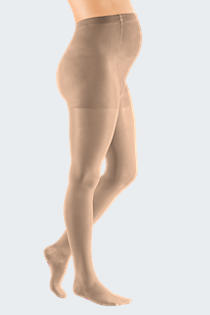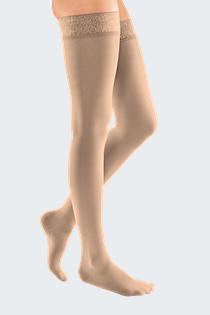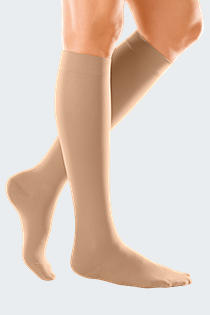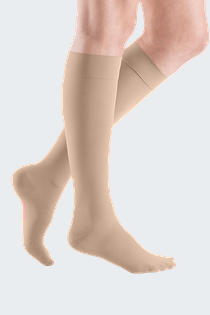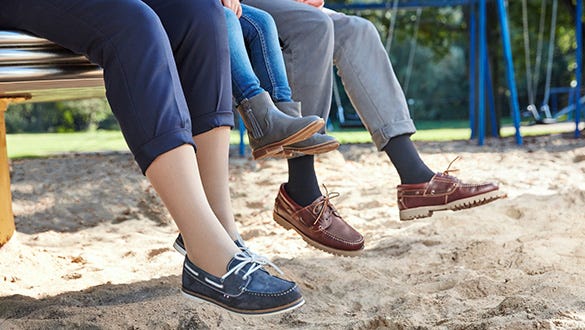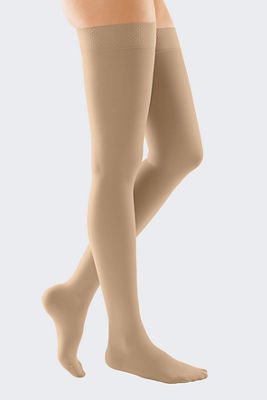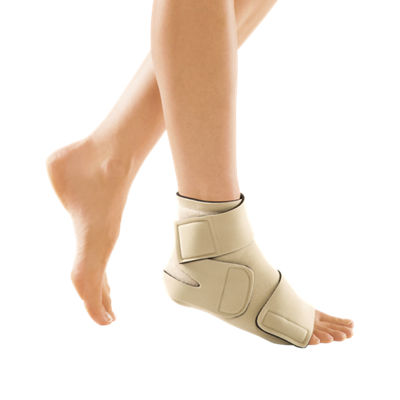- Free First Class Delivery
- Buyer Protection
- Secure Online Shopping
- Healthcare Professional? Click here
Varicose Veins
Signs of vein weakness


Categories
What are varicose veins?
Varicose veins are swollen and enlarged veins that usually occur on the legs and feet. They may be blue or dark purple and are often lumpy, bulging or twisted in appearance just visible under the surface of the skin.
Causes: What causes varicose veins?
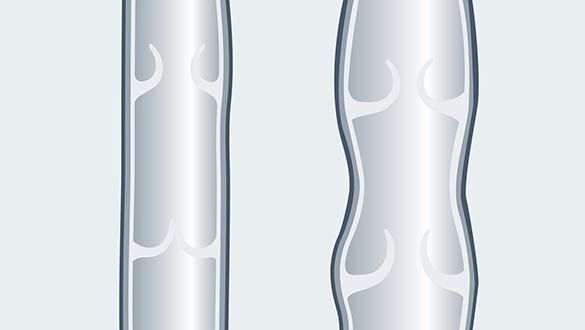

Varicose veins are created when the venous valves become faulty, this is known as valve insufficiency. If the venous valve function decreases, blood collects in the veins. It puts pressure on the venous wall, causing the veins to become stretched and enlarged (varicose).
Symptoms of varicose veins
Varicose veins can be easily recognised and identified. Unlike thread veins, which are mostly harmless, varicose veins can cause discomfort and pain in the legs. If you suffer with signs and symptoms described, you may benefit from some treatment. Possible signs include:
- tired legs
- heavy legs
- swollen legs
- feeling of tightness
- tingling in the legs
- pain in the legs


People with varicose veins can suffer from tired and heavy legs, particularly in the evenings, after long periods of standing or sitting but also in warm weather conditions. The ankle area can also be swollen because fluid has collected in the tissue there. The symptoms can be alleviated by lying down or sitting with your legs raised.
First varicose veins during pregnancy
Many women first notice varicose veins during pregnancy. As the pregnant mother gains weight, her body produces more blood and the pressure in her veins increases. Tired and swollen legs during the day are a common side effect during the months of pregnancy.
Compression stockings by medi that support you during your pregnancy:
Risk factors for developing varicose veins
The following factors may increase the development of varicose veins:
Return of blood
Everything that prevents the blood returning from the legs:
- clothing that is too tight
- pregnancy
- exercise involving crunches and heavy lifting
- chronic coughing or constipation (pushing causes intense backflow into the leg veins)
- sitting for a long time or crossing your legs
- being overweight
Venous wall
Everything that relaxes the venous wall:
- Hormones (contraceptive pill, menopause hormones, pregnancy
- Alcohol
- Warmth (for example, saunas, hot baths, underfloor heating)
Muscle pump
Everything that impedes or shuts off the muscle movement:
- standing or sitting for a prolonged time
- high heels
- paralysis
Genetic predisposition
Venous diseases can be hereditary. It is possible other members of your family may experience similar symptoms, so be aware of the signs and symptoms.
Preventing varicose veins: Top tips
Avoid standing or sitting still for long periods and try to move around every 30 minutes. Simple exercises support the venous return by improving the circulation and can help to maintain a healthy weight. Try to introduce vein exercises several times a day, they will get your circulatory system moving and are quick to do. Consider adding the following choices into daily life:
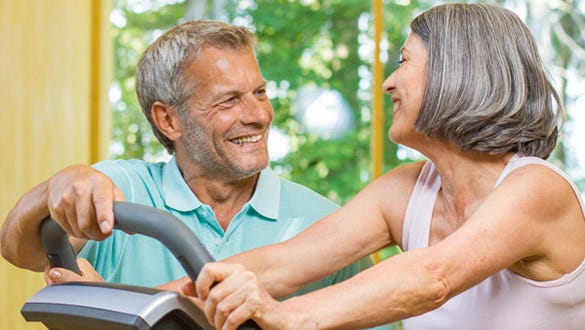

- Exercise: Lying down and walking is better than sitting and standing: Move around as often as you can. Change your position more often; raise your legs.
- Sport and exercise: Plan ten minutes of simple exercises into your everyday routine to activate your calf muscle pump.
- Healthy diet: maintain a healthy weight by eating a well-balanced diet.
- Optimise your weight: Consider reducing any excess weight.
- Clothing: Wear comfortable, loose clothing.
- Shoes: Choose comfortable, flat footwear so that your calf muscle pump is able to work effectively.
- Showers: Rinse your legs in cold water regularly. This helps the veins contract and improves the blood flow to the heart.
Avoid hot baths, underfloor heating and saunas because warmth makes your veins expand more and can negatively affect the return flow of blood.
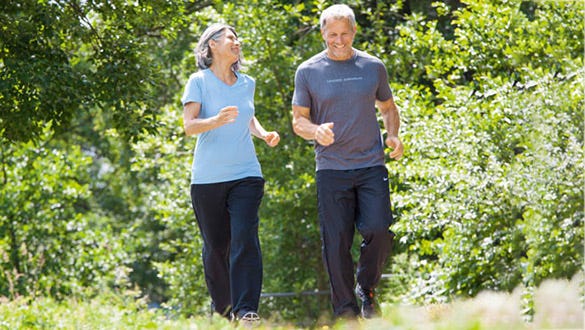

Treating varicose veins: Diagnosis and therapy
Diagnosing varicosis: This is how varicose veins are diagnosed
For a precise diagnosis, the health care practitioner examines the characteristics of the vein weakness and checks whether deeper veins are also responsible for the varicose veins. The following medical procedures are used in the diagnosis of varicose veins:
- Medical History: Questions about typical leg symptoms and risk factors.
- Physical examination: Varicose veins are easily visible when you are standing up, as are the advanced stages of chronic venous disorders, such as swelling or skin changes.
- Palpation (examination by feel): The doctor feels the hardened tissue and oedema.
- Alternative options, imaging diagnosis methods, such as ultrasound investigations (duplex sonography, doppler sonography).
The examination methods listed are not painful and do not involve any risk!
Varicosis therapy: Treatment of varicose veins
Venous disorders are not curable because defective venous valves or dilated veins cannot be restored to their original state. However, there are ways to reduce the impact of the symptoms.
Conservative therapy for varicose veins with medical compression stockings and exercise
- Medical compression stockings: The fundamental therapy for varicose veins is compression stockings in combination with exercise. The overstretched veins are compressed by the stockings. The venous valves close better and the direction of flow of blood to the heart is improved. Medical compression stockings keep existing venous disease under control and help prevent new varicose veins from developing. Compression stockings also have an additional benefit: They hide the varicose veins on the legs. Treatment with compression stockings is essential because faulty veins left untreated can worsen. Studies prove the effectiveness of medical compression stockings: Your symptoms, such as heaviness or tightness, pain and swelling, are significantly improved, which makes every day feel better.*
- Topical treatments: Substances such as horse chestnut have a positive effect on inflamed skin and on the venous wall. Therefore, you should also consider the medi skincare series.
Products from medi
Removing varicose veins: Sclerotherapy, laser or also surgical removal (“vein stripping”) of the affected veins
The general rule: You decide together with your doctor what measures are necessary and advisable. Smaller thread veins can be treated with laser. In sclerotherapy, a substance is injected into the affected vein with a very thin needle. This leads to the vein being permanently sealed. Larger varicose veins are usually removed surgically. The surgical methods are so advanced that there are hardly any visible scars and all healthy veins are retained.
Medication for varicose veins: Strengthening the venous walls
There is no medicine to cure varicose veins. However, medicines can be a useful supplement and aid to treatment of symptoms.
What happens if varicose veins remain untreated?
If the condition remains untreated, the increased pressure in the veins means that increased fluid will collect in the leg tissue. Healthcare practitioners refer to this as an oedema (swelling). Furthermore, red blood cells in the circulation, can enter the tissue. These become visible as reddish-brown skin discolouration on the lower legs. Owing to the changes in the vascular wall and the reduced speed of the blood flow, the varices can become inflamed (phlebitis), with either severe or less severe development of a blood clot (thrombus).
A lower leg wound is the most severe possible consequence of varicose veins. If left untreated, varicose veins can therefore have a negative impact on your health:
- Skin colour changes (pigmentation)
- Eczema
- Leg ulcers (venous lower limb wound)
Who treats varicose veins?
A vein specialist is known as a “phlebologist”. Phlebologists specialise in the diagnosis and treatment of vascular diseases, particularly venous diseases.
They treat venous disease, among other things, including varicose veins (varicosis) in the lower extremities or thrombosis diseases, such as deep vein thrombosis in the legs, as do vascular surgeons. Skin specialists, such as dermatologists, also treat venous conditions.
medi products for venous diseases
Thanks to their breathable, stretchy material, medical compression stockings are very comfortable for men and women to wear and are adapted to meet your individual needs as a patient. Benefit our modern, technologically advanced & tried-and-tested therapy with state-of-the-art medical compression stockings. They look the same as classic fine stockings or knee socks for men, but have an additional circulatory support.
Your Doctor or Clinician decides on your treatment therapy after diagnosing your condition. They will then prescribe the relevant wound care therapy products to meet the patient’s individual treatment plan.
* Rabe E et al. Indications for medical compression stockings in venous and lymphatic disorders: An evidence-based consensus statement. Phlebology 2018;33(3):163-184.

